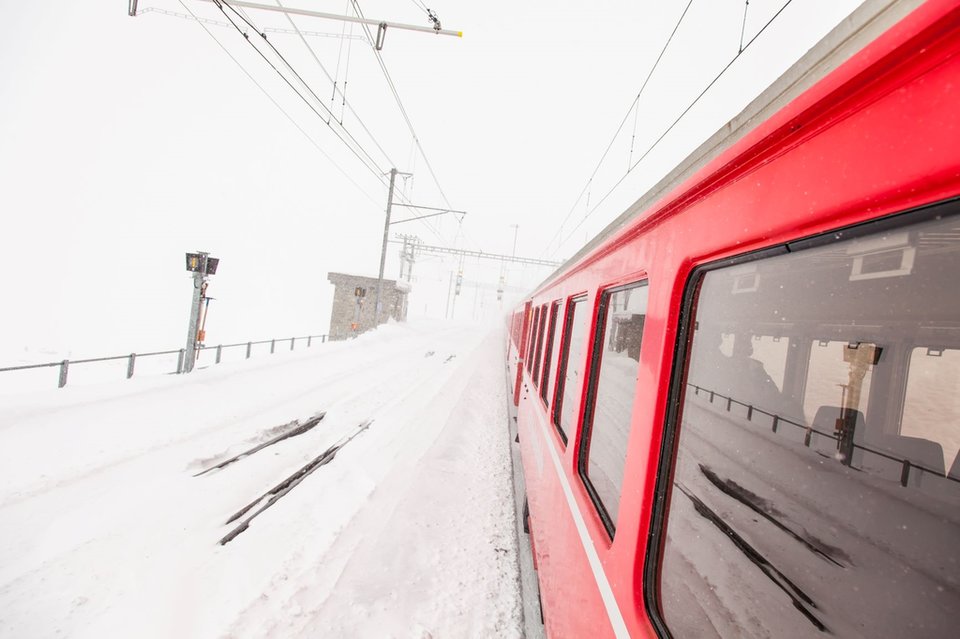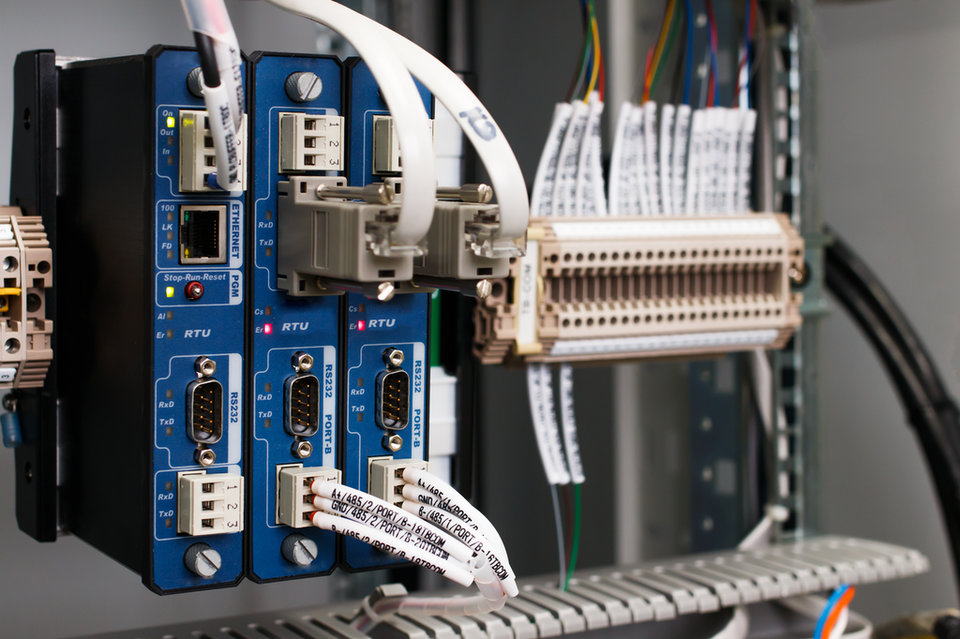All images: Max Bögl
Technology
Data express: using remote telemetry units to enhance rail operations
Here, Ovarro channel sales director Philippe Aretz looks at how rail companies can use remote telemetry units to access the benefits of big data.
The growing number of passengers travelling by rail is placing greater pressure on an already stretched rail network. Efficient maintenance and monitoring programmes are an essential element of ensuring that these rail assets operate safely and reliably.
At the same time, rail companies need to deliver returns to their stakeholders, and any disruption or delay to the timetable can result in lost revenue. With fines for late or cancelled trains, operators have a vested interest in managing reliability and one of the best ways of doing this is to capture, interpret and act upon data.
The most appropriate device to collect and process this 'data’ is the remote telemetry unit (RTU). These devices have a long-proven record of sitting on track, station, signalling and level crossing assets where they collect, store and act upon data. They are able to do this reliably and securely in railway lines around the world that run through the harshest of environments.
Within the rail network, RTUs are effectively computers in the field. They collect data locally, act upon it immediately, report to the central control room and maintain a local historical store as an additional backup. The RTU is the device sitting between the control room and the field instruments, which provides a low latency response to changing site conditions as well as performing data filtering.
The RTU ensures that only key, critical information is passed via the narrow communications links, minimising data throughput but maximising useful information received. Specific types of roles they carry out include power distribution monitoring and control, remote signalling subsystems, point and crossing monitoring, track and station condition monitoring, and passenger information systems. Alongside this, RTUs can provide train/track location system monitoring and control, and driverless train early warning systems.
COWI UK vice president Eva MacInnes. Credit: COWI

Monitoring ice build-up at switch points
In a recent case study, RTUs delivered benefits to a rail network located in a country where there are extreme weather conditions. As such, the operator was required to have workers in over 700 railway stations on call around the clock for clearing snow or ice from switch points to prevent them freezing or blocking with snow.
Following analysis on ways to improve this situation, the major European rail network specified TBox RTUs to provide point heating condition monitoring. This involved the track maintenance team installing automatically controlled heating systems at all strategic locations to reduce the large cost of manpower.
In addition, hundreds of switch points were fitted with small heaters powered by gas or electricity. Using a complex algorithm based on data from temperature and humidity sensors, ice and snow on the rails are now detected automatically. A complex proportional–integral–derivative (PID) control system starts the heaters to prevent the build-up of snow or ice on the switch points.
In each railway station, automation is performed by a TBox RTU located in a control cabinet. Depending on the complexity and size of the station, one or more remote I/O modules are provided as sub-stations in the field to operate and monitor a group of switch point heaters. Via a local RS 485 network that can be up to several kilometres in length, the sub-stations handle the measurement and control tasks of the individual heating systems.
The telemetry units deliver an extremely fast return on investment for the train operator
Despite electrical interference from passing trains, automation and communications remain perfectly stable. Each sub-station has its own operating console for maintenance and manual control. Only one device is required for communications and remote control of the heating systems.
All the data (correct sensor operation, set-points, outside temperature, gas pressure, present consumption, etc.) from the RTUs is transmitted to a central station using supervisory control and data acquisition (SCADA) software and an Ethernet network with TCP/IP protocol. The wide-area network (WAN) uses fibre-optics and Ethernet communication.
For redundancy and safety, each TBox RTU has its own GSM modem that can be directly addressed for maintenance or control purposes. It can also be used to send e-mails or alarms to GSM mobiles.
The telemetry units deliver an extremely fast return on investment for the train operator due to the significant savings in electricity and gas consumption by the fully controlled heating system. Plus, complete remote control of each railway station eliminated the need for local personnel to clear the switch points, enabling them to be deployed to other tasks.
These kinds of RTU systems feature the most reliable hardware and software components, which was essential on this project due to the extremely harsh environment. In addition, the system allows for local data logging of events and recording energy consumption, temperatures, and equipment operating time, which is proving to be valuable information for the management team. The system provides automatic alarm signalling to key maintenance personnel in charge of the switch points.

Servelec rail case study - frozen points med
Operational benefits of RTUs
In addition to providing safety and reliability, heating systems can realise major savings in energy costs through automation. Using a programmable device like the TBox RTU provides significant savings compared to older techniques, in which the heaters are either constantly on for the entire winter or operated by a thermostat.
Key features needed in any RTU are resilience to the site environment, the ability to operate with minimal drain on local power resources and the processing power to perform any local control algorithms autonomously. It is also beneficial for an RTU to have extensive diagnostics capability and a low meant time to repair (MTTR), which will reduce the time technicians need to spend on site, improving both efficiency and personnel safety.
If communications break down,[RTUs] continue to run, maintaining a historical log and reporting back later
Being able to perform autonomous control in real time and then report to SCADA that it has everything under control is an advantage; staff at the SCADA interface can ‘supervise’ the operations by setting new KPIs (set points) or updating instructions (open/close this, start/stop that or switch on/off – as in the track point heaters, for example) for RTU’s to then act upon and manage locally.
RTUs can do everything locally, which means that if communications break down they continue to run, maintaining a historical log and reporting back later. In remote track and tunnel locations, this is an essential part of keeping maintenance teams informed and being able to trend data. Cybersecurity is also a key requirement from an RTU.
TBox RTUs embed all features to protect the asset from external attack by using login mechanism, data encryption, firewall, denial of service protection and brute force attack protection.

Servelec rail case study - frozen points med
A wide range of applications for RTUs
Switch point heating and catenary de-icing systems, similar to that used in the field report above, now provide energy-saving heating and de-icing for the rail infrastructure in some of the coldest parts of the world.
The applications include electrical point heating, geothermal point heating, overhead wire de-icing, contract rail de-icing and platform and stairs de-icing. They are installed as complete efficient energy-saving solutions or as single components to existing systems and widely used in all "cold" European countries, the US and Canada. They provide an excellent return on investment and long-life cycle.
[RTUs] will continue to help the rail sector deal efficiently with record numbers of passengers
As RTUs evolve and become more powerful, they will continue to help the rail sector deal efficiently with record numbers of passengers. Innovation will help drive this change; it is already possible to deploy RTUs on a diverse range of rail assets, whatever its size or age.
The rail sector is defined by its geographically spread assets and multiple processes, all of which generate massive amounts of data; the key to ensuring this data improves efficiency and performance is being able to capture and interpret it in real-time and convert it into useful management information.
All images credit: Ovarro